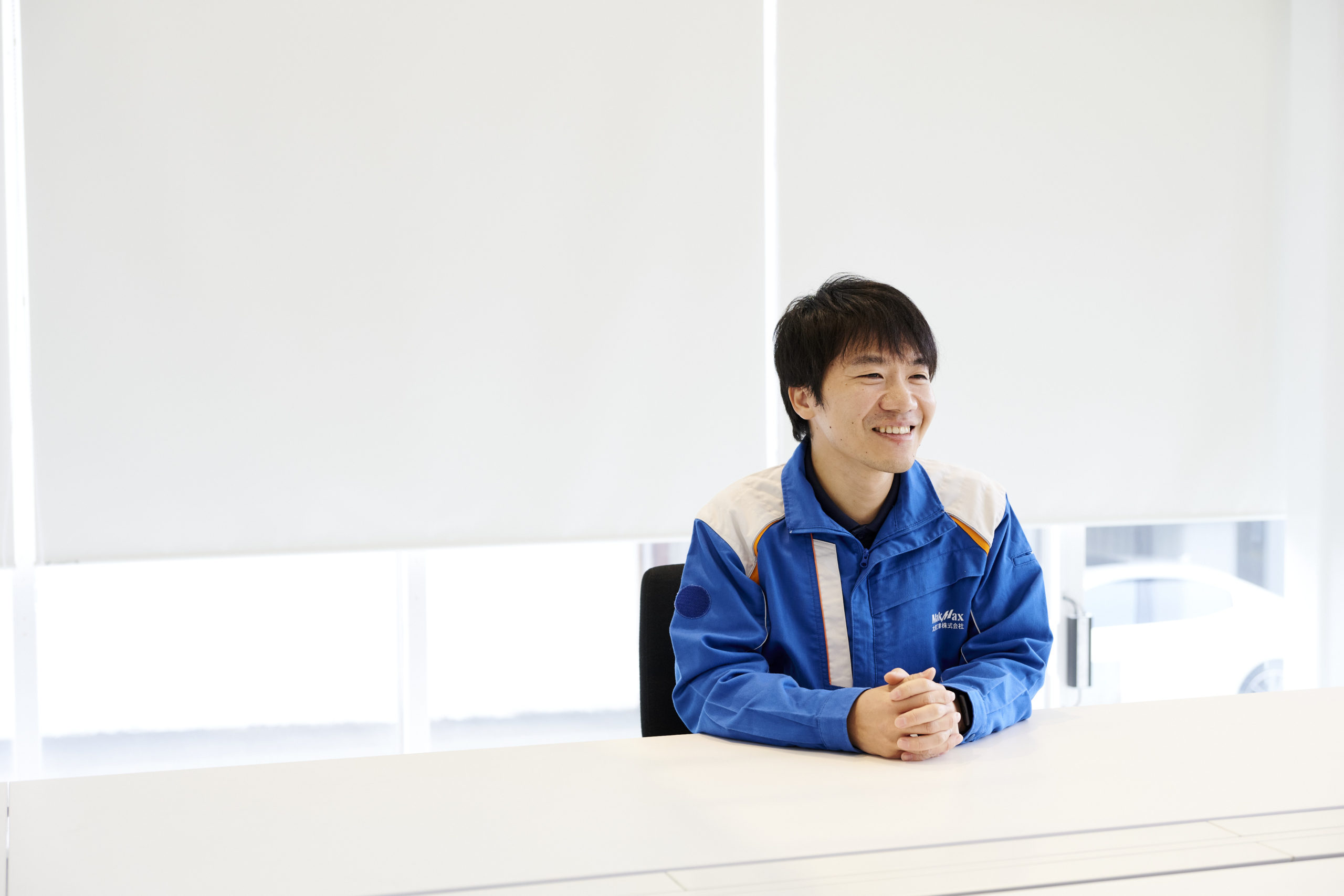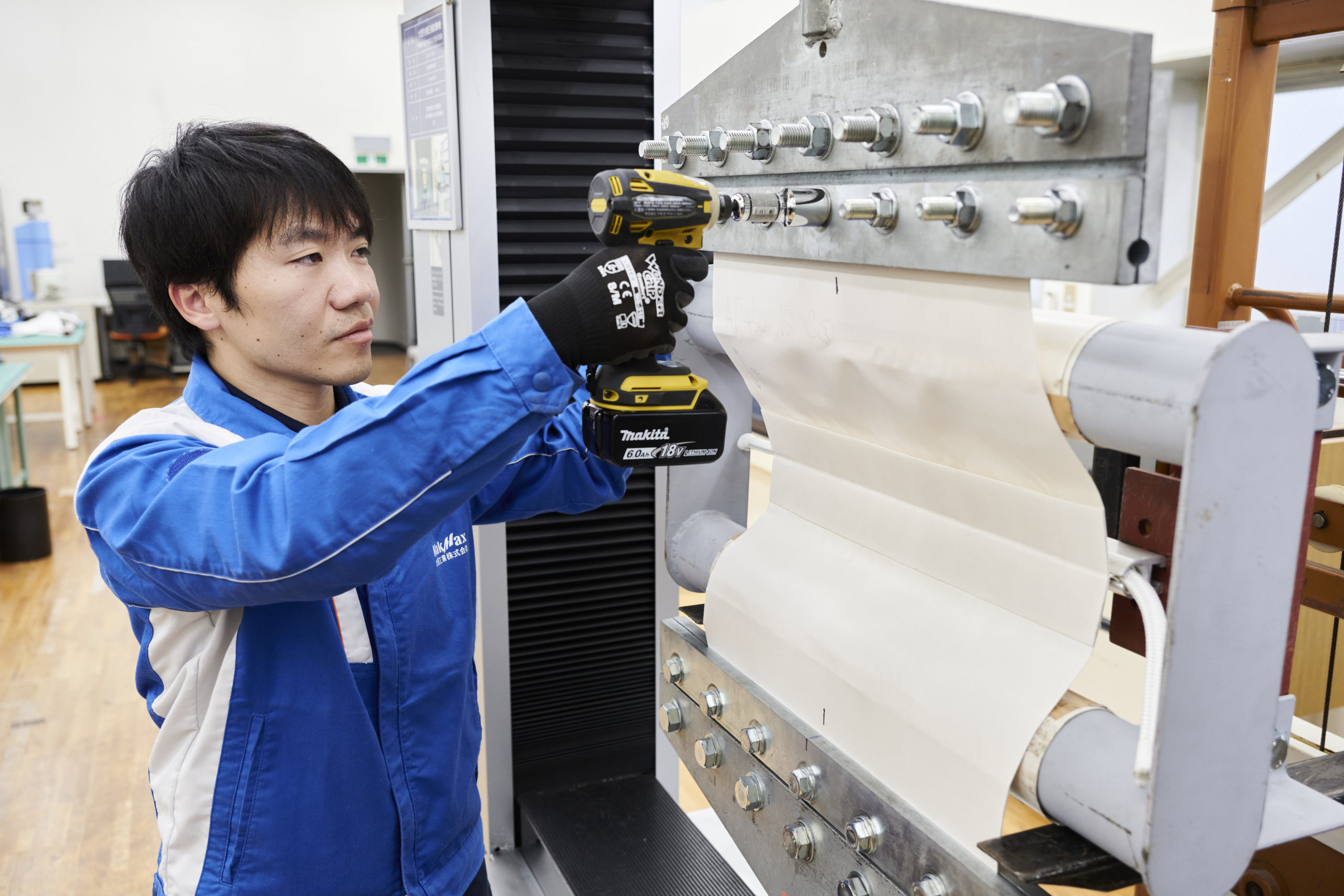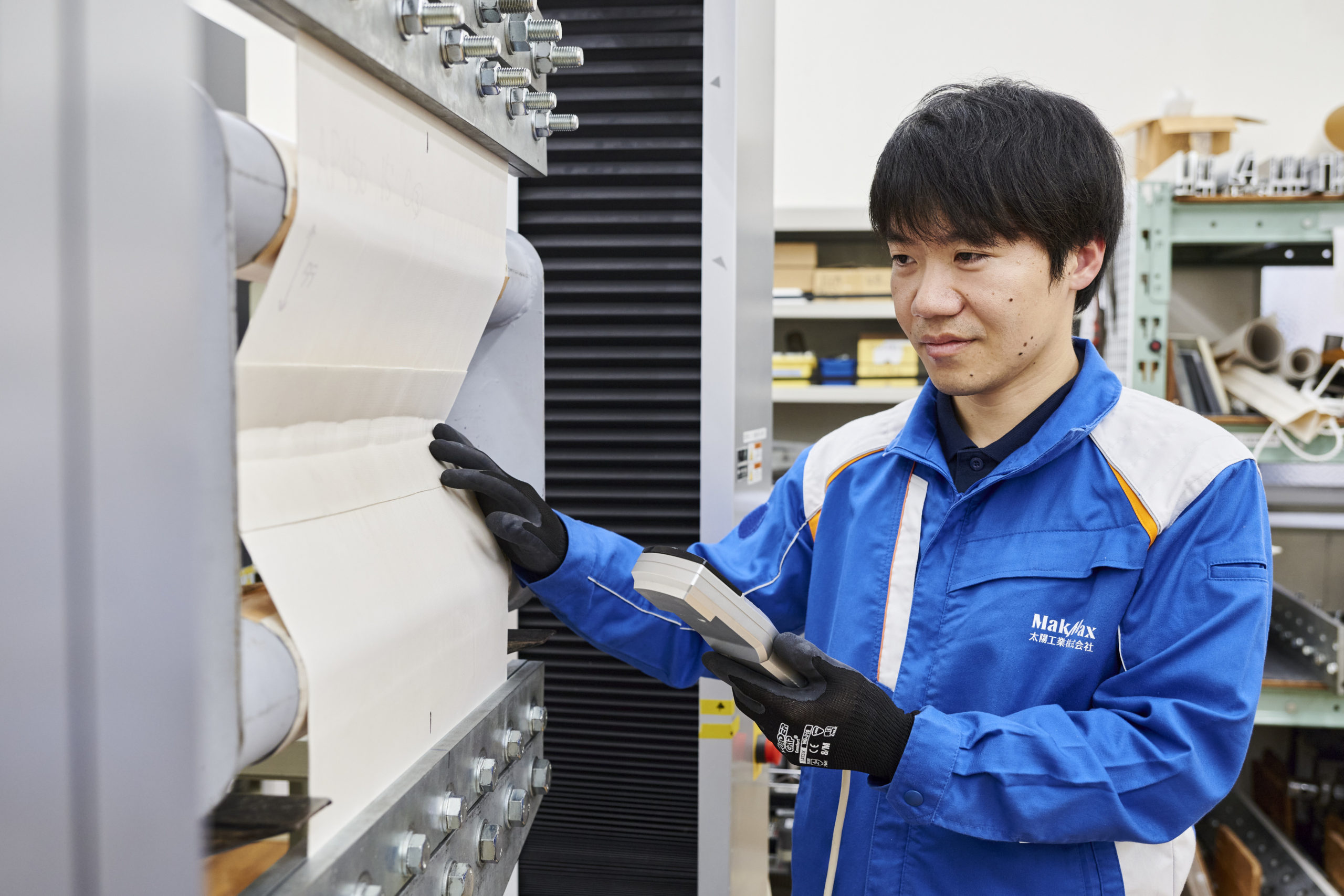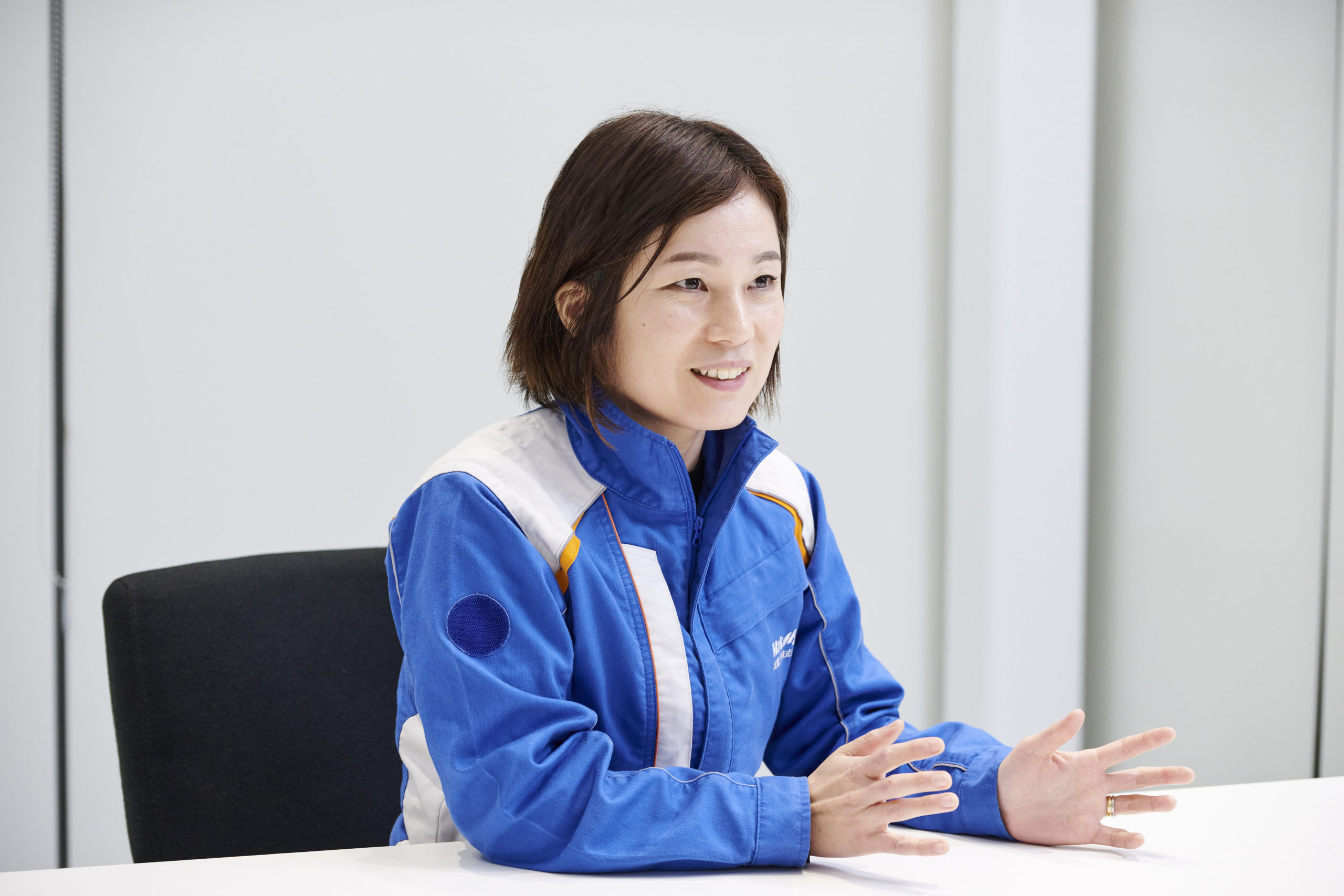

Taiyo Kogyo Column
Researcher of a leading membrane company, taking on the challenge of developing unprecedented membrane materials.
Yuuki Shiozawa
Group Leader, Technical Development Department, Technical Research Institute Joined the company in 2010
2024.03.13

The Technical Research Center, which is responsible for research and development of membrane structure technology and materials, is the only facility of its kind owned by Taiyo Kogyo in the world among companies involved in membrane structure buildings.
In this one-of-a-kind laboratory, Shiozawa takes on the challenge of evaluating and analyzing materials and products, developing new evaluation methods, and researching and developing membrane materials.
We interviewed Shiozawa, who is at the forefront of the research, about the development environment, his experiences to date, and his thoughts on the members of his group.
Passing on the baton of development that has continued for 30 years to the next generation
Our membrane materials are used in all kinds of facilities, from the Tokyo Dome to temporary buildings. In some cases, existing membrane materials are used, but in many cases, new membrane materials are developed to meet the environment and needs.
Photocatalytic membranes were developed to prevent surface contamination of membranes. Research on photocatalytic membranes began about 30 years ago. Photocatalysts, which exhibit a catalytic effect when exposed to light, are used to make it difficult for dirt to adhere to the membrane surface, and even if it does get dirty, the dirt is washed off in the rain. The history of development has been passed down and evolved from senior to junior, and it was five years ago that I joined the company.
My view of development is that the needs of society should be development. Photocatalyst has two properties, superhydrophilicity and decomposition of stains, and when applied to membrane materials, it functions to resist staining. Therefore, we started research and development of membrane materials using these properties. Once we were able to provide it to an overseas client, it was still not a simple matter. After repeated tests and improvements, we are now in our fifth year of research and development and are finally approaching completion.

Taking on challenging developments with a high degree of difficulty as a group of professionals
The most difficult part of development is not getting the expected results. Membrane materials are not a single material, but are composed of a variety of materials. Therefore, depending on the combination of materials, performance may be degraded or even improved, leading to unexpected errors in some cases.
If there is a problem with a material, we will visit the site to check the situation, even if it is overseas. So far, we have visited Taiwan, Thailand, Malaysia, and France. We check the local environment and listen to what the person in charge has to say. We have equipment and other facilities that can reproduce high temperatures and humidity, so as soon as we return, we will reproduce the situation on site and make improvements.
What is reassuring is that the Technical Research Center is staffed with professionals. We have a variety of talents, including senior staff who have designed many large-scale properties, senior staff who are knowledgeable about construction laws, and senior staff who are skilled in identifying issues and countermeasures. That is why we are able to develop a wide range of developments, such as developing membrane materials coated with photocatalytic functions even though we are not a materials manufacturer, or combining advanced materials with membrane materials even though we do not have manufacturing capabilities. We are proud of our achievements in these areas.

Experiencing a major setback in my sixth year with the company - what I learned from it
I place great importance on “the feeling of satisfaction and understanding” in development. I came to place particular emphasis on this when I was involved in the development of a new membrane material with antibacterial and antiviral functions toward the end of my first year with the company. These functions are in demand today, but at that time there were only cases of SARS and swine flu. It was unknown whether it would become a sellable product or not, but I was interested in it because it was related to my research theme when I was a student, and the department encouraged me to embark on the project.
It took about six years of development, and when the new membrane material was finally completed, I was filled with a sense of accomplishment. After all, this was my first major project since joining the company. I was full of expectation that we would receive orders from medical institutions, but we never received any requests. In other words, the development of a product that was not needed by society ended in failure. I have never felt the weight of responsibility as much as I did at that time. When I was devastated by the irreversible six years, I was approached by the then general manager of the company.
“Thank you. Good job.”
It was a casual remark, but I can’t tell you how much those words saved my life. After this incident, which brought back and forth a variety of emotions, the importance of developing products that are needed was engraved in my mind.
I have learned a great deal from my mistakes. Our company has an environment where even young people can take on challenges, and our strength is that we can accumulate experience from early on. I am thankful that we have a blessed environment for researchers, where if something looks interesting or if we have an idea, the company encourages us to “give it a try!” I am grateful that we are blessed with an environment that encourages researchers.

We want to expand our ideas from various genres of cutting-edge technology and develop the future of membrane structures.
The development of membrane materials is difficult, but conversely, the appeal is that a variety of functions can be given depending on the combination of the materials. Because these materials can be mixed and coated with a high degree of freedom, there is a wide range of possibilities, which is what makes them so interesting. And because there are various restrictions on membrane structures, there are still many things that I do not know. With the help of my seniors, I am still in the process of trial and error.
Since being appointed group leader last year, I have been able to think about things based on the flow of the entire department. Until now, I have spent my days immersed in my own research, but I would like to support everyone’s growth by encouraging junior staff to take on challenges, calling on them when they make mistakes, and providing support, just as the general manager once did for me.
At the same time, since I am in a position to lead research and development, my current goal is to absorb a wide range of knowledge. I would like to keep my eyes open for cutting-edge technologies in diverse genres, such as green innovation and aerospace, to gain a broad perspective on the direction in which future research and development will take.

Related Articles
- TOP>
- Taiyo Kogyo Column>
- Researcher of a leading membrane company, taking on the challenge of developing unprecedented membrane materials.







